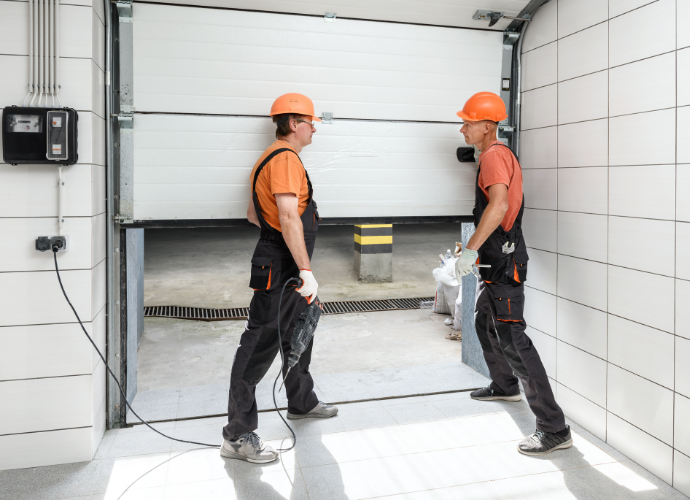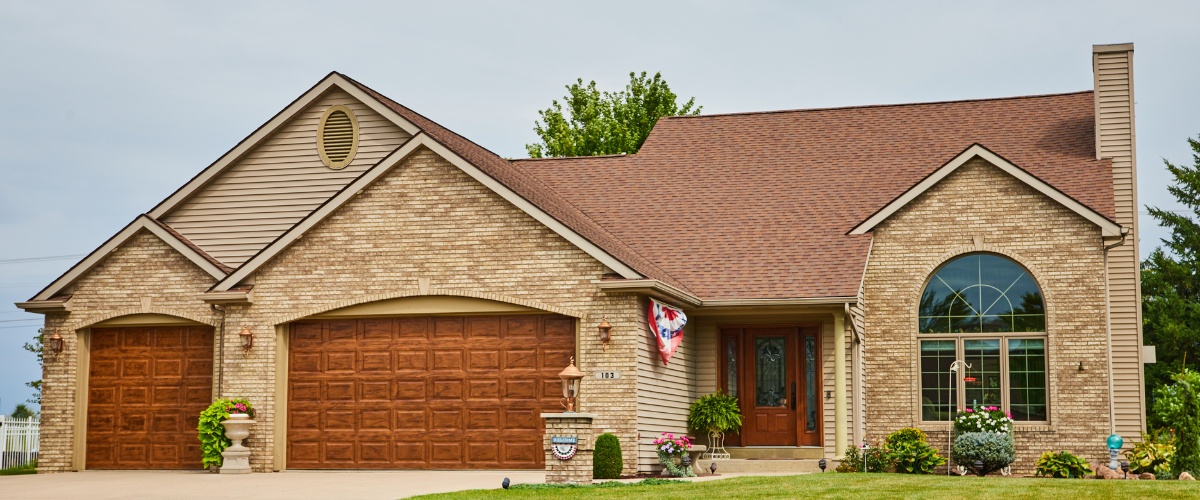Is your garage door acting up? From squeaky rollers to a malfunctioning opener, garage door issues can be frustrating and even dangerous. This comprehensive guide equips you with the knowledge and tools to diagnose, repair, and maintain your garage door, ensuring smooth and safe operation for years to come. Whether you're a DIY enthusiast or prefer professional help, we've got you covered.

Understanding Garage Door Mechanisms
Understanding the components of your garage door is the first step towards successful repair and maintenance. A typical garage door system comprises several key parts working in harmony. These include the door panels themselves (often made of steel, wood, or fiberglass), the sturdy tracks guiding the door's movement, the powerful springs providing counterbalance, the reliable rollers ensuring smooth operation along the tracks, and the sophisticated opener that handles automatic lifting and lowering. Regular inspection of these garage door parts is crucial for preventative maintenance and early detection of potential problems. Ignoring minor issues can lead to more significant and costly repairs down the line. Proper lubrication of moving parts is also a key aspect of preventing wear and tear. Understanding your garage door's specific components will allow for better troubleshooting and effective repairs.
Components of a Garage Door
Let's delve into the specifics of each component. The door panels are the visible parts, often featuring sections for insulation and aesthetic appeal. The tracks, typically made of steel, run along the sides, guiding the door's movement. Springs (torsion or extension) are essential for counterbalancing the door's weight, making it easier to lift and lower. Rollers move along the tracks, reducing friction and ensuring smooth operation. The garage door opener is the motorized component controlling the automatic opening and closing mechanism; safety sensors ensure the door reverses upon encountering obstructions. Knowing these parts helps in diagnosing issues and choosing the right course of action—whether it's DIY repair or professional garage door service.
Common Garage Door Problems
Many garage door problems stem from relatively minor issues that can often be addressed with straightforward fixes. However, some situations demand the expertise of a professional garage door repair technician. Identifying the problem correctly is paramount in deciding the best approach. Let's look at some of the most frequently encountered garage door problems.
Track Issues
Bent, broken, or misaligned tracks are common culprits behind garage door malfunctions. A derailed door, often caused by a bent track, can lead to the door becoming stuck or operating erratically. This also impacts the rollers and springs and can damage the motor. Inspecting the tracks for any damage and performing track adjustments can sometimes resolve these problems relatively easily. For severe track damage, professional garage door repair may be necessary to ensure safety and proper functionality.
Spring Problems
Broken or weakened garage door springs are a serious issue. Springs are under immense tension and attempting a repair without proper knowledge and safety precautions can be extremely dangerous. A broken spring can cause the door to fall suddenly, posing a significant safety hazard. If you suspect a spring problem, it's best to contact a professional garage door service immediately for safe and proper repair or replacement. Remember, garage door springs are under high tension and should only be handled by qualified professionals.
Opener Malfunctions
Issues with the garage door opener can range from simple fixes like replacing batteries to more complex problems requiring professional garage door opener repair. Problems such as the door not opening or closing completely, slow operation, or noisy operation may indicate problems with the opener's motor, gears, or other components. Checking the safety sensors is a crucial first step, as misaligned or dirty sensors can prevent the door from operating correctly. For more serious malfunctions, consulting a professional is recommended.
Step-by-Step Repair Guides
While some repairs are best left to professionals, many minor garage door repairs can be handled with a DIY approach. However, always prioritize safety. Never attempt repairs involving high-tension springs without professional training. Here are a couple of basic repair steps.
Fixing Off-Track Doors
If your garage door has come off the track, carefully inspect the track for bends or obstructions. Gently attempt to realign the door with the track, ensuring it's properly seated. For significant misalignments or damage to the track, professional garage door service is highly recommended. Be cautious when working with heavy doors; always prioritize safety. Before starting any repairs, ensure the opener is disconnected from the power source.

Replacing Garage Door Rollers
Worn or damaged rollers can cause noisy operation and hinder smooth movement. Replacing rollers is a relatively straightforward DIY task. However, before starting, ensure you have the correct replacement rollers for your garage door. Always purchase quality garage door parts to ensure longevity and safety. If you feel uncomfortable undertaking the task, it's best to contact a professional garage door service.
Professional vs. DIY Garage Door Repairs
Deciding between professional and DIY garage door repairs depends on several factors. Simple tasks like lubricating the tracks or replacing rollers are generally manageable for DIY enthusiasts. However, tackling complex issues such as spring replacement or opener repairs necessitates professional expertise. Safety should always be the top priority. If you lack the necessary tools, experience, or confidence, calling a professional is always the safer option. Professionals possess the skills and equipment to handle complex repairs safely and efficiently, ensuring your garage door functions optimally and safely.

When to Call a Professional
It’s essential to prioritize safety. When dealing with high-tension springs, broken tracks, or complex opener malfunctions, professional expertise is vital. Don't attempt these potentially dangerous repairs yourself. Call a qualified garage door technician for any issues that compromise safety or require specialized tools and skills. Emergency garage door repair services are available for immediate assistance with serious issues.
DIY Repair Tips
For minor repairs, always begin by disconnecting the power to the garage door opener. Gather necessary tools and materials before starting. Take photos or videos of the process to help you remember the steps. If the repair seems too complex or if you encounter any unexpected issues, immediately stop and call a professional.
Maintenance Tips for Garage Doors
Regular garage door maintenance is crucial for preventing costly repairs and ensuring safety. Just like with a car, proactive maintenance is key to avoiding significant problems. A well-maintained garage door is a safer and more reliable part of your home. Regular lubrication, cleaning, and inspection can drastically extend the lifespan of your garage door system.
Regular Maintenance Tasks
Lubricate moving parts like rollers, hinges, and tracks at least twice a year. Inspect the tracks for any signs of damage or misalignment. Check the springs and http://ricardorubr249.theburnward.com/conquer-your-garage-door-challenges-in-2025-a-complete-guide-to-repair-and-installation cables for wear and tear. Clean the tracks and rollers regularly to remove dirt and debris. Test the automatic reverse system to ensure its proper functioning. Regular inspections and maintenance can greatly contribute to the safety and longevity of your garage door.
Garage Door Safety Systems
Safety should always be a top priority when it comes to garage doors. Modern garage doors are equipped with several safety features designed to prevent accidents. These include photo-electric sensors that detect obstructions and automatically reverse the door's movement, ensuring that it doesn't close on anything, automatic reverse systems that detect excessive force during closing, and safety cables that prevent the door from falling if a spring breaks. Regular testing of these safety features is crucial to maintaining a secure garage door system. Ignoring these safety features can lead to severe injury or damage. Regular testing and inspections are crucial for ensuring that these safeguards are working properly and that your garage door operates safely.
In conclusion, maintaining your garage door involves understanding its components, identifying potential problems, and choosing the appropriate solution—whether it's a simple DIY fix or professional intervention. By following these guidelines and prioritizing safety, you can ensure that your garage door operates smoothly and safely for years to come. Don't hesitate to contact a qualified professional if you encounter a complex problem or are unsure about any repair procedure. Your safety and the well-being of your family are paramount.